Chicago’s Lake Michigan and Gulf of Mexico off Texas experience rare phenomenon known as ‘steam devils’ that see freezing weather cause vapor to rise from the water
“Steam devils” swirled in Chicago and Texas as vapor rose from Lake Michigan and the Gulf of Mexico after an Arctic freeze swept across the country, bringing record temperatures with snow and freezing rain.
Images of the serene scene emerged this weekend, capturing steam rolling over the water near Chicago, Illinois, and Galveston, Texas, after severe weather placed more than 140 million people under wind chill warnings or warnings.
A social media user shared one video He captured the eerily beautiful sight of steam rolling over Lake Michigan on Sunday, writing, “You know it’s cold when the lake smokes… it feels like -31F…”
Similar scenes were captured in Galveston, Texas, by Saltwater-Recon.com‘as steam mist/devils, crepuscular rays and low clouds mingle to create something that resembles a backdrop for a movie scene.’
The rare phenomenon is known as “steam devils,” which occur when a small vortex forms over lakes and oceans during an outbreak of cold air while the water is still relatively warm.
‘Steam devils’ swirled in Chicago and Texas as vapor rose from Lake Michigan and the Gulf of Mexico (pictured) after an Arctic freeze swept across the country, bringing record low temperatures with snow and freezing rain
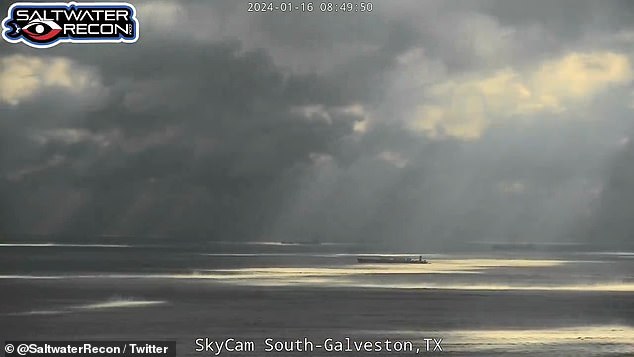
In Galveston, Texas, “steam fog/devils, crepuscular rays, and low clouds blend together to create something that resembles a backdrop for a movie scene.”
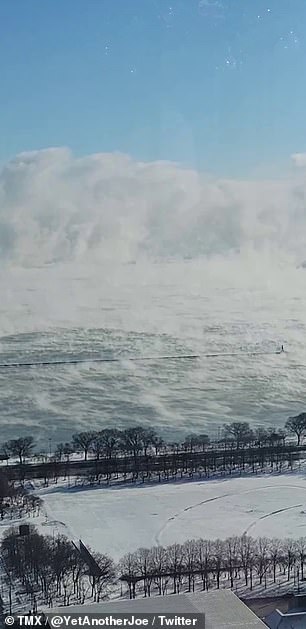
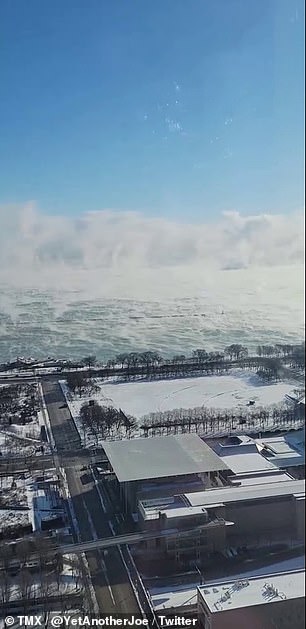
Images of the serene scene emerged last weekend, capturing steam rolling over the water in Chicago, Illinois and Galveston, Texas, after severe weather placed more than 140 million people under wind chill warnings or warnings.
“So the air adjacent to the lake is heated by the water and rises rapidly and can start to rotate, going into the air, creating a vortex,” Global News meteorologist Peter Quinlan said.
A ‘steam devil’ was previously spotted in Canada, emerging over Okanagan Lake as a blast of Arctic air emerged.
Temperatures dipping below minus ten helped create this intriguing phenomenon over the relatively warmer water.
Meteorologist Alyssa Carbonneau told us CBC: ‘You start to get steam fog, also called steam smoke, forming on the lake. As we get pressure gradient differences, it can start to rotate and extend into that column of rotating air.
“It’s similar to dust devils we see over dry land, rather than a tornado, which is caused by a severe thunderstorm, and those are usually associated with much stronger winds.”
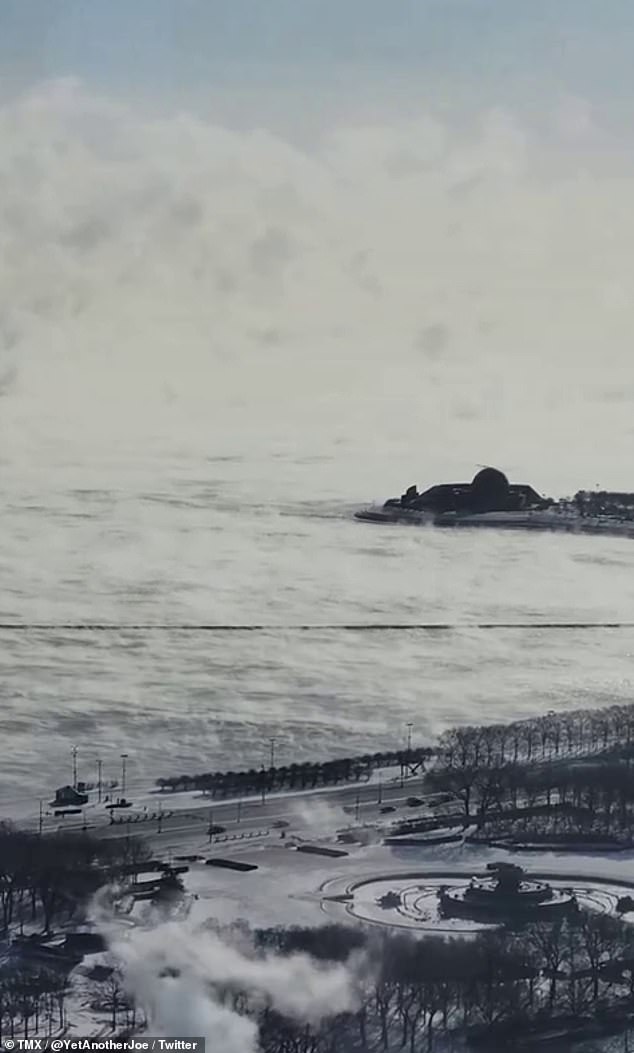
The rare phenomenon is known as “steam devils,” which occur when a small eddy forms over lakes and oceans during cold air outbreaks while the water is still relatively warm.
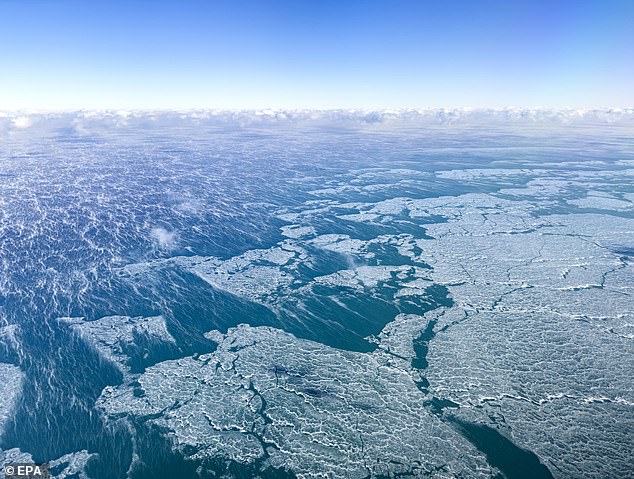
“So the air adjacent to the lake is heated by the water and rises rapidly and can start to rotate, go into the air and create a vortex,” Global News meteorologist Peter Quinlan said.
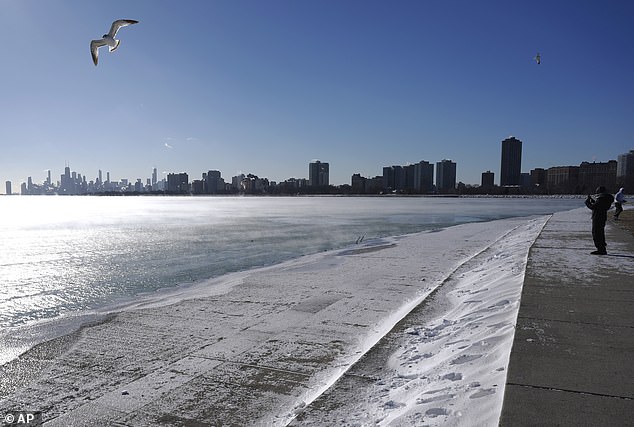
The Arctic blast sent temperatures plummeting from the south to the northeast, canceling or delaying more than 5,000 flights and killing seven people.
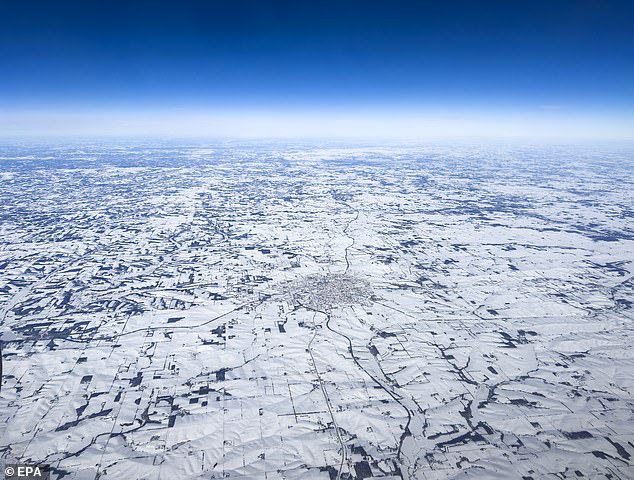
More than 120,000 U.S. homes and businesses were without power early Tuesday, most in Oregon, Texas and Louisiana after widespread outages that began Saturday
The explosion in the Arctic sent temperatures plummeting from the south to the northeast, canceling or delaying more than 5,000 flights and killing seven people.
More than 120,000 U.S. homes and businesses were without power early Tuesday, most of them in Oregon, Texas and Louisiana, after widespread outages that began Saturday.
New York City’s LaGuardia Airport saw the most disruptions on Tuesday, with 14 percent of flights canceled and 57 percent delayed. Houston’s Bush International Airport and D.C.’s Reagan National Airport also experienced significant disruptions.
“The streak is over,” the weather service said of the more than 700 days without significant snowfall in the Big Apple.
The wind chills could drop temperatures below minus 30 degrees across the South and the Mississippi Valley, with nearly 80 percent of the country experiencing freezing temperatures over the next week.
“SNOW IS COMING,” Mayor Adams’ office tweeted earlier Monday afternoon. “It’s been more than 700 days, but between 6 p.m. tonight and 6 p.m. tomorrow, 1 to 4 inches of snow will fall.”
Record-breaking cold air is expected across much of the country on Wednesday, including the Deep South the weather channel.
While temperatures are expected to moderate by mid-week, another round of bitterly cold air from the central US will spread eastward during the second half of this week.
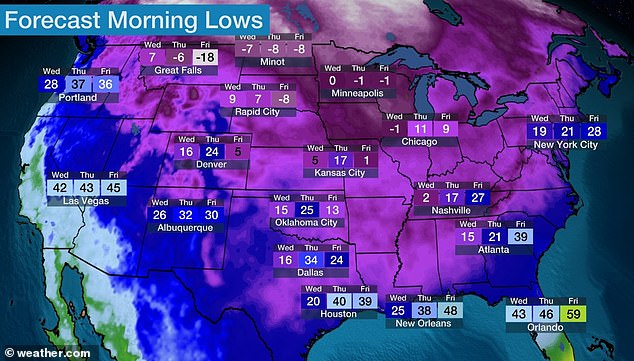
Due to the severe weather, more than 140 million people have been warned about wind chill
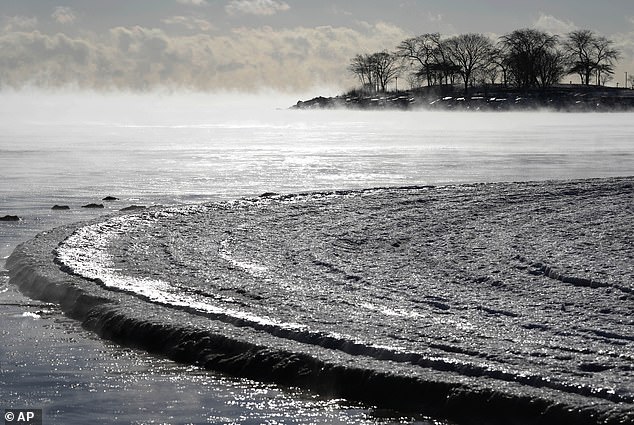
Steam rises from Lake Michigan along the shoreline in Evanston, Illinois, on Tuesday

Brooklyn, New York, is photographed early Tuesday. The city had not had significant snow for more than 700 days
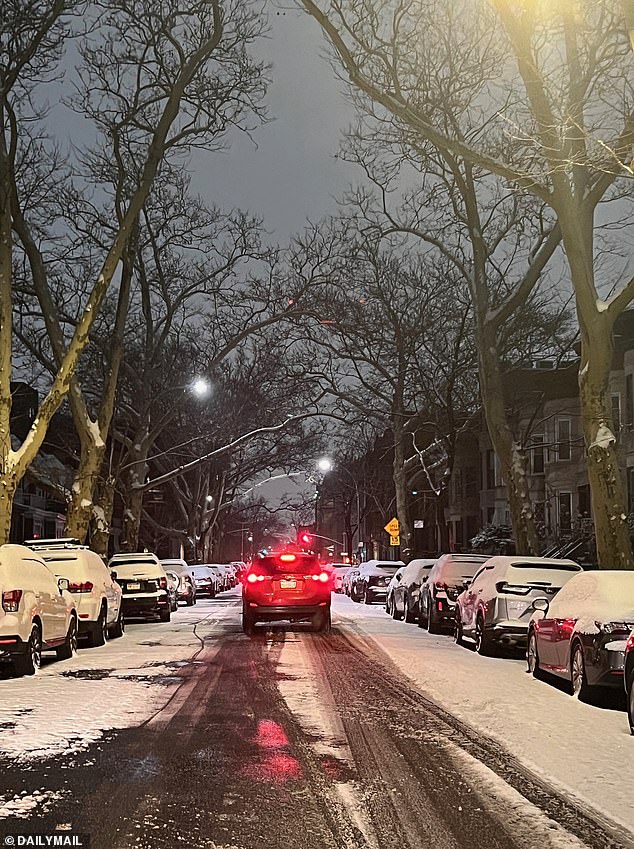
Brooklyn, New York, is pictured in snow Tuesday morning as an arctic freeze hits the US
Seen on Monday the coldest temperatures ever Iowa‘s presidential nominating contest, stopping travelers and testing the mettle of NFL fans in Buffalo for a playoff game postponed a day by wind-whipped snow.
Classes were canceled Tuesday for students in major cities including Chicago — the nation’s fourth-largest public school district — Denver, Dallas, Fort Worth and Portland.
The storm was blamed for at least four deaths over the weekend around Portland, including two people who died of suspected hypothermia.
Another man was killed after a tree fell on his home and a woman died in a fire that spread from an open fire stove after a tree fell on a camper.
Three homeless deaths in the Milwaukee area were investigated. They likely died of hypothermia, officials said.
A 64-year-old man was found dead under a bridge on Friday, and a 69-year-old man was pronounced dead on Saturday after being found in a vehicle.
A 40-year-old man was found dead Monday near railroad tracks, the Milwaukee County Medical Examiner’s Office said.
In Utah, where nearly four feet of snow fell in the mountains in 24 hours, a snowmobiler was struck and killed by a tractor-trailer Sunday evening about 70 miles southeast of Salt Lake City, the Utah Highway Patrol said.
In Wyoming, a backcountry skier was killed after triggering a 50-foot-wide avalanche.
The victim was swept into a gully and through brush and trees and then remained buried for about 15 minutes before being found by a companion Sunday afternoon in the mountains south of Alpine, according to the Bridger-Teton Avalanche Center.
